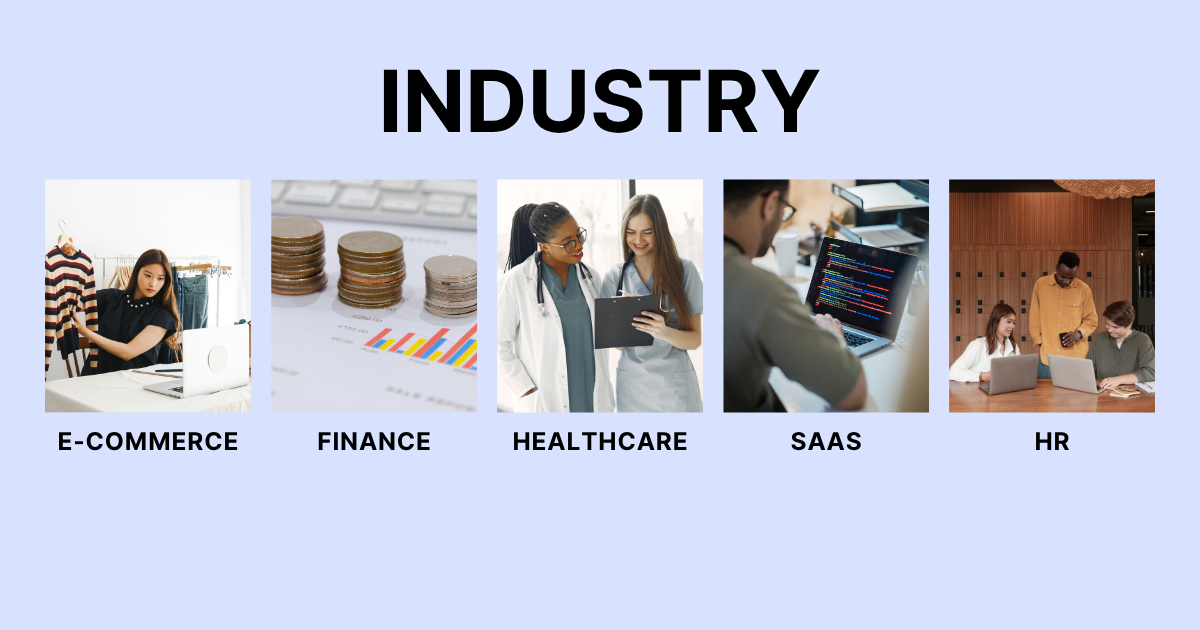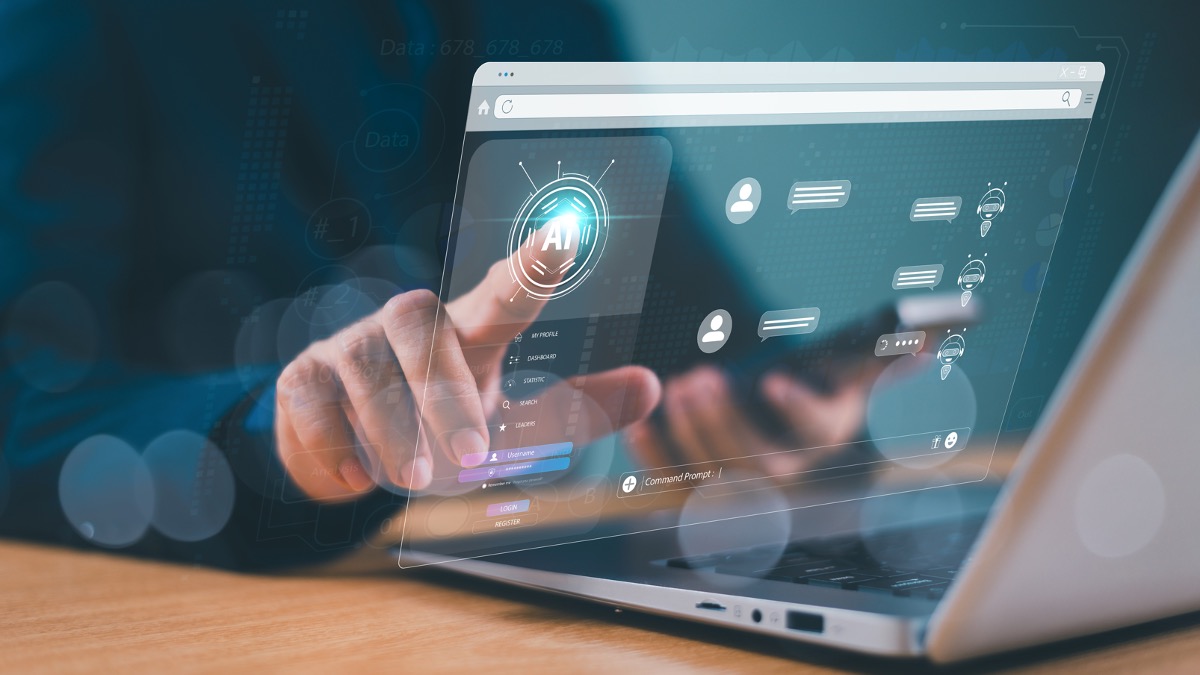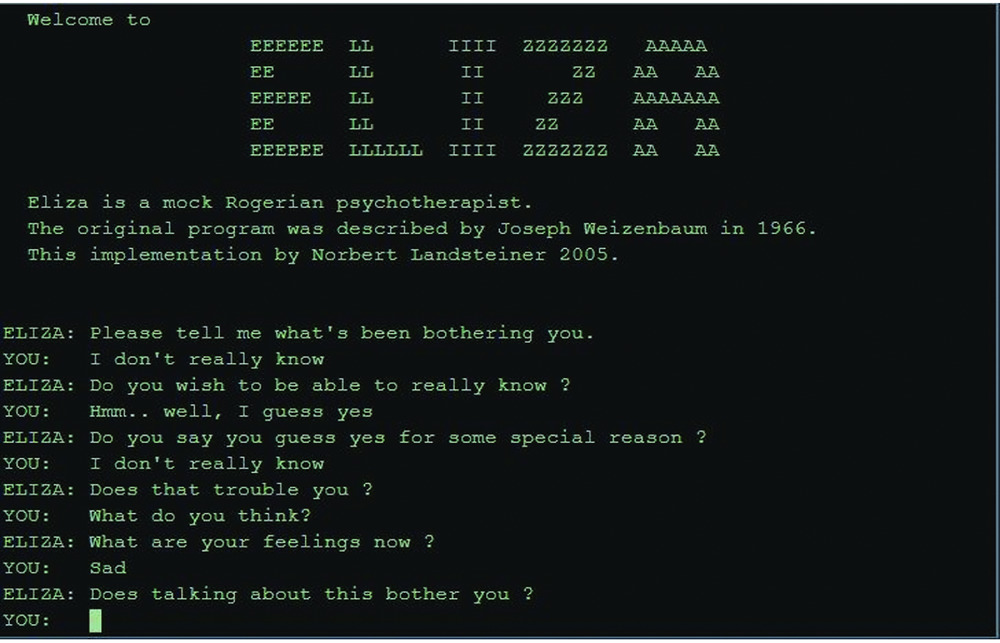TL;DR: AI Chatbots in 2025
AI chatbots in 2025 are smarter, faster, and more integral to business operations than ever. From handling multimodal conversations to running autonomous workflows, today’s chatbots are transforming customer service, sales, internal support, and more. This blog covers what AI chatbots are, how they work, their tech stack, use cases, business benefits, and the platforms leading this evolution. It also explores the trends and innovations shaping their future through emotional intelligence, persistent memory, and holographic interfaces.
Introduction
In 2025, AI chatbots are no longer just tools, they are business essentials. They power support systems, automate workflows, and create more intelligent, personalized customer experiences at scale. Backed by technologies like NLP, machine learning, and generative AI, modern chatbots can understand language, process context, and take real action far beyond simple Q&A. Whether you are in e-commerce, finance, healthcare, or SaaS, chatbots now handle everything from resolving tickets to boosting revenue. This blog highlights how they work, what is driving adoption, and where chatbot technology is heading next.
What Is an AI Chatbot?

An AI chatbot is a software program designed to simulate human conversation using artificial intelligence. It understands user queries, processes input, and generates context-aware responses using technologies like natural language processing (NLP) and machine learning (ML). Unlike traditional rule-based bots, AI chatbots can learn from interactions, adapt to new questions, and improve over time.
It can interpret language, respond intelligently, and automate routine communication without human input. These tools are widely used in industries like retail, finance, healthcare, and education for support, scheduling, and customer engagement.
Types of AI Chatbots
In 2025, AI chatbots fall into multiple categories based on capability and use case:
- Rule-Based Chatbots: Use scripts or flowcharts for simple, repetitive tasks. Suitable for static FAQs and basic menu navigation.
- AI-Powered Chatbots: Leverage NLP and ML for flexible, responsive conversations that evolve with data.
- NLP Chatbots: Focus on understanding sentence structure, tone, and context. These are used for conversational accuracy and natural interaction.
- Machine Learning Chatbots: Continuously improve by analyzing past interactions, adjusting to patterns and behavior.
- Generative AI Chatbots: Built on large language models, these bots generate original responses and handle diverse, unstructured queries.
- Voice-Based Assistants: Integrate speech recognition for hands-free interaction across smart devices.
- Autonomous AI Agents: Go beyond chat to complete full workflows, such as scheduling or transaction processing, with minimal supervision.
Chatbot vs AI Chatbot vs Virtual Assistant
- Rule-Based Chatbot: Follows a fixed logic flow. Suitable for scripted tasks like FAQs but struggles with unexpected input.
- AI Chatbot: Adapts to input using AI, understands variations, and improves through learning. Ideal for dynamic conversations.
- Virtual Assistant: Goes beyond chat. Uses voice, connects to smart devices, manages schedules, and provides a wider range of services.
Growing Adoption of AI Chatbots
AI chatbots are no longer optional, they are strategic assets. Businesses are prioritizing AI to handle high-volume tasks efficiently. According to Gartner Report (2024), 92% of organizations are investing in AI-powered tools. A Clutch (2023) report shows business leaders associate AI with optimism and innovation.
Usage among consumers is surging too. Ipsos reports that 68% of users have interacted with a chatbot. DemandSage (2025) estimates 987 million global users rely on AI chatbots.
This consistent growth reinforces AI chatbots as essential components of modern business infrastructure.
What’s the Difference?
Technology Stack Behind AI Chatbots
Modern AI chatbots are backed by advanced, modular architectures:
- Natural Language Processing (NLP): Powers understanding of user input, identifying intent and semantics.
- Machine Learning (ML): Enables chatbots to refine predictions and decision-making through training data.
- Sentiment Analysis: Detects tone and emotion, helping bots adjust responses for empathy and tone control.
- Generative AI Models: Produce context-aware, original replies using LLMs like GPT-4.
- Multimodal Interfaces: Process and respond to text, voice, and visual input for richer interactions.
- API & Integration Layers: Seamlessly connect bots to CRMs, ERPs, helpdesk platforms, and analytics dashboards.
To dive deeper into how AI chatbots understand queries, generate responses, and learn over time, read our in-depth guide on how AI chatbots work.
AI Chatbot Integration & Automation
AI chatbots today are designed to work across ecosystems:
- CRM Integrations: Sync with tools like Salesforce, HubSpot, and Zendesk.
- No-Code Platforms: Builders like Robylon allow non-developers to deploy and update bots.
- Workflow Automation: Trigger actions such as ticket creation, follow-ups, or lead scoring.
- Multichannel Deployment: Launch bots on web, mobile, WhatsApp, Slack, and more.
- Custom APIs: Build tailored workflows using flexible SDKs and integrations.
Curious about what tools your chatbot can connect with? Check out the list of supported integrations
AI Chatbot Trends in 2025
The AI chatbot space is moving quickly. In 2025, these are the core developments defining next-gen bots:
1. Multimodal Capabilities
Chatbots now handle multiple input types like text, speech, images, and uploaded files within the same session. This allows users to, for example, speak a question, upload a screenshot, and get a coherent response in context. It improves accuracy for complex tasks like troubleshooting, document review, or order tracking.
2. Emotional Intelligence
Sentiment analysis has advanced to recognize tone, urgency, and emotional cues. Bots now adjust their tone offering empathy when a user is frustrated or being brief when the mood is neutral. This leads to smoother interactions and reduces escalations to human agents.
3. Real-Time Personalization
Modern chatbots respond based on live user behavior and past interactions. They adapt the conversation based on clicks, location, purchase history, or previous queries without needing manual triggers. This creates faster resolutions and more relevant answers for each user.
4. Autonomous Agents
AI agents can now manage entire workflows without human intervention. This includes actions like processing returns, updating CRM records, and sending reports based on scheduled logic or real-time inputs. They go beyond answering queries to actually completing tasks.
5. Collaborative Networks
AI systems across tools and departments now share data and context in real time. A support chatbot can hand off to a billing bot without losing conversation history or user details. This reduces siloed experiences and enables seamless cross-functional automation.
Industry Use Cases

E-Commerce
Chatbots in retail assist with personalized product recommendations, help recover abandoned carts through timely prompts, and answer pre-purchase questions in real time. They also manage order tracking, refunds, and post-sale support without needing agent involvement.
Finance
In banking and fintech, AI chatbots guide users through account access, detect suspicious activity, and explain credit or loan options. They streamline onboarding, automate routine inquiries like balance checks, and escalate flagged issues to compliance teams.
Healthcare
Healthcare bots simplify appointment scheduling, conduct basic symptom triage, and deliver medication or follow-up reminders. They also help reduce call center load by answering insurance queries and offering location-based clinic info or service availability.
SaaS
For software platforms, AI chatbots assist with onboarding tutorials, clarify product features, and troubleshoot setup issues. They offer contextual help inside apps, reducing support ticket volume and guiding users through workflows without requiring human support.
HR & Internal Operations
Chatbots automate employee onboarding, answer policy-related questions, and resolve routine IT or HR queries. They can route tickets, generate internal docs, and even collect employee feedback freeing up ops and HR teams for higher-value tasks.
Benefits of AI Chatbots
For Customers
- Instant Assistance
Chatbots respond within seconds, eliminating hold times and giving users the answers they need on the spot. - 24/7 Access
Support is available around the clock, including weekends and holidays, with no reliance on human availability. - Personalized Experiences
Bots tailor responses based on past conversations, user behavior, and preferences creating more relevant interactions. - Frictionless Self-Service
Users can resolve common issues like order tracking or password resets without calling or waiting for an agent. - Higher Satisfaction
Faster responses and smarter conversations lead to better support experiences, which drive up customer satisfaction scores.
For Businesses
- Reduced Operational Costs
AI chatbots cut down the need for large support teams by automating routine tasks, significantly lowering overhead. - Better CSAT Scores
Consistent, on-brand replies and reduced wait times improve customer satisfaction and net promoter scores (NPS). - More Productive Human Agents
By offloading repetitive work, bots allow support staff to focus on complex or high-impact interactions. - Deeper User Behavior Insights
Every chatbot conversation captures structured data, revealing trends, pain points, and customer intent in real time. - Revenue Gains via Upsells and Lead Conversion
Bots engage users proactively, recommend relevant products, and qualify leads contributing directly to revenue growth.
Top AI Chatbots and Platforms in 2025
In 2025, AI chatbots have moved beyond novelty, they are now essential tools across industries. Here are some of the most widely used chatbots and platforms, each offering unique strengths based on use case:
Leading AI Chatbots
ChatGPT
Developed by OpenAI, ChatGPT remains one of the most versatile AI chatbots. It's commonly used for content creation, data summarization, customer support, and automating routine interactions across channels. Known for its high adaptability and conversational tone, it is ideal for both business and personal productivity.
Microsoft Copilot
Integrated into Microsoft 365, Copilot enhances productivity within Word, Excel, Teams, and Outlook. It helps users draft content, analyze data, summarize documents, and automate day-to-day workflows without leaving the Microsoft ecosystem. It is especially appealing for enterprise teams already using Microsoft tools.
Gemini (by Google)
Gemini excels in content support within Google Workspace apps like Docs, Gmail, and Sheets. It helps with writing, email drafting, and content refinement, making it a go-to option for marketing teams, writers, and administrative professionals looking for built-in AI assistance.
DeepSeek
DeepSeek is gaining popularity for technical use cases like software development and academic research. With a strong focus on coding, data science, and structured outputs, it's suited for engineers, researchers, and professionals dealing with complex queries.
Grok
Built with an emphasis on casual, witty conversations, Grok is designed for fast, lightweight interactions. It integrates well with social platforms and is geared toward users who want answers delivered with personality. It is useful for everyday Q&A and entertainment-driven interactions.
Perplexity AI
Perplexity specializes in real-time information retrieval. It pulls answers from multiple credible sources, prioritizing accuracy and context. It is widely used for research, fact-checking, and concise summaries making it a powerful assistant for students, analysts, and content professionals.
Top Chatbot Development Platforms
If you are looking to build your own AI chatbot, several robust platforms dominate the 2025 landscape:
- Google Dialogflow: Offers advanced NLP and voice capabilities. Ideal for building conversational experiences across web, mobile, and smart devices.
- Robylon AI: A no-code chatbot builder tailored for business users and non-developers. Lets you design customer support AI agents quickly and connect them to your workflows without writing code.
- Microsoft Bot Framework: Designed for enterprise-grade bots. It integrates seamlessly with Azure services, offering scalability and security.
- IBM Watson Assistant: Known for AI-driven conversation design and industry-specific templates. Supports complex workflows and enterprise integrations.
- Amazon Lex: Built on the same tech as Alexa. Provides deep voice and text integration, perfect for creating voice-enabled bots with ease.
- Rasa: A powerful open-source option with full control over data and customization. Great for developers needing flexibility and on-premises deployment.
- Wit.ai: A free platform by Meta that supports multiple languages and is optimized for building voice and text bots. Good for small teams and prototyping.
Looking for the best AI chatbot tools to compare? We’ve rounded up the top platforms in our latest blog: Best AI Chatbot Software 2025
AI Chatbots Are Changing Customer Service

1. Always Available
AI chatbots operate 24/7, offering consistent support across time zones without needing breaks or downtime.
2. Instant Responses
Customers get immediate answers to common questions, eliminating hold times and long queues.
3. High Volume Handling
Bots scale effortlessly to handle thousands of chats at once, preventing slowdowns during peak traffic.
4. Personalized Replies
Chatbots use past interactions and behavioral data to tailor responses, making support feel more relevant.
5. Omnichannel Support
Whether on a website, mobile app, or social platform, bots maintain a consistent experience across all channels.
6. Reduced Support Costs
By automating repetitive queries, businesses cut operational costs while maintaining service quality.
7. Actionable Insights
Every conversation feeds analytics that help identify trends, gaps, and opportunities for improvement.
8. Self-Service Enablement
Bots guide users through common tasks like resetting passwords or tracking orders without human help.
9. Proactive Engagement
AI can initiate follow-ups, send reminders, or offer help based on user behavior or past issues.
10. Continuous Learning
Each interaction helps the chatbot refine its understanding and improve future performance automatically.
Are you exploring the advantages of AI chatbots for enhancing customer experience, Read here
Conversational AI Overview
Conversational AI encompasses technologies that allow machines to understand and respond to human language. Key components include:
- NLP: Decodes natural language input to derive intent and context.
- ML: Adapts and improves chatbot logic over time.
- Generative AI: Crafts human-like responses on the fly.
- Multimodal Interfaces: Supports interaction across voice, chat, and visual channels.
AI chatbots are the most popular use case of conversational AI today used across industries to automate service, sales, and support.
Evolution of Chatbots
The journey of chatbots has evolved dramatically.

- 1966 – ELIZA: First chatbot simulating a therapist
- 2001 – SmarterChild: Popular IM bot for fun and basic tasks
- 2016 – Facebook Messenger Bots: Introduced mass NLP-powered bots
- 2023 – ChatGPT 3.5: Brought generative AI to the mainstream
- 2025 – AI Agents: Bots now reason, respond emotionally, and act independently
Human + Machine Engagement Models
Modern customer service blends automation and human interaction:
- Bots handle routine queries and transactional tasks
- Human agents tackle high-stakes, complex issues
- Smart handoffs ensure smooth transition without losing context
- The result: faster service, happier customers, more efficient teams
Future Chatbot Technology
What’s Next in 2025?
- Quantum-Powered AI
Quantum computing promises to process massive datasets in milliseconds, allowing bots to solve complex problems like fraud detection or medical diagnosis with greater speed and precision. - Digital Twins
Chatbots will evolve into personalized digital replicas that adapt to individual user behavior, preferences, and tone offering hyper-personalized support across devices and platforms. - Energy-Efficient Models
New algorithms and model architectures are reducing energy consumption while maintaining performance, making chatbot deployment more scalable and sustainable at enterprise levels. - Holographic Interfaces
Next-gen interfaces will bring chatbots into the physical space via AR/VR or holograms, allowing users to interact with 3D avatars for immersive, real-time help in retail, healthcare, and education. - Persistent Memory
Advanced bots will retain long-term context tracking past issues, preferences, and resolutions over weeks or months to deliver smoother, more personalized conversations without needing users to repeat themselves.
Why Choose Robylon?

Robylon AI is not just another chatbot tool, it is a purpose-built platform designed for businesses looking to automate support, reduce ticket volumes, and improve response time without compromising customer experience.
Here is how Robylon stands out
- Ready-to-Use AI Agents: Deploy pre-trained agents that can handle FAQs, returns, order tracking, and support workflows right out of the box.
- No-Code Agent Builder: Create and customize AI agents without writing code. The interface is built for CX and operation teams not just developers.
- Seamless Integrations: Connect with CRMs, help desk tools, and messaging platforms through built-in integrations and API support.
- Omnichannel Deployment: Launch your chatbot on websites, apps, WhatsApp, and other customer-facing channels with minimal setup.
- Real-Time Automation: Use event triggers and logic to automate actions like escalating tickets, tagging conversations, or sending follow-ups.
- Analytics-Driven Optimization: Get clear insights on bot performance, resolution rates, and drop-offs to continuously improve the experience.
Robylon AI is designed for scale, whether you are automating 50% of your support tickets or building custom workflows for high-volume teams. It is trusted by growing businesses that need fast setup, flexible workflows, and measurable ROI.
Ready to see Robylon in action?
Book a quick demo and explore how automation can transform your support operations.
Summary
AI chatbots in 2025 have evolved into intelligent digital assistants that operate across industries and channels. This guide covered their core types, underlying technologies, and strategic impact on customer experience and operations. We explored top platforms like ChatGPT, Copilot and Gemini, along with leading development tools like Robylon AI. From automation to emotional awareness, AI chatbots are now reshaping how businesses engage users and scale support. Looking ahead, innovations like quantum AI, persistent memory, and holographic interfaces are setting the stage for a new era of conversational automation.
FAQs
1. What is the difference between a rule-based chatbot and an AI-powered chatbot?
Rule-based chatbots follow predefined scripts and cannot adapt to new inputs, while AI-powered chatbots use NLP and machine learning to understand context, improve with interactions, and respond dynamically.
2. How do AI chatbots personalize responses in real-time?
AI chatbots personalize responses using behavioral data such as previous chats, purchase history, click behavior, and session context to tailor replies during a live interaction.
3. Which industries are currently using AI chatbots most effectively?
Industries like e-commerce, finance, healthcare, SaaS, and HR are leading adopters of AI chatbots for customer support, onboarding, lead generation, and internal process automation.
4. What technologies power modern AI chatbots in 2025?
The modern chatbot stack includes natural language processing (NLP), machine learning (ML), sentiment analysis, generative AI, multimodal input processing, and API-based integrations.
5. How do autonomous AI agents differ from traditional chatbots?
Autonomous AI agents not only converse but also execute workflows such as scheduling, refund processing, or data entry without human intervention, unlike traditional bots that only respond to queries.
6. What platforms are best for building AI chatbots in 2025?
Top platforms include Robylon AI, Dialogflow, Microsoft Bot Framework, IBM Watson, Amazon Lex, and Rasa each offering varying degrees of no-code capability, customization, and integration flexibility.


.png)







.png)









